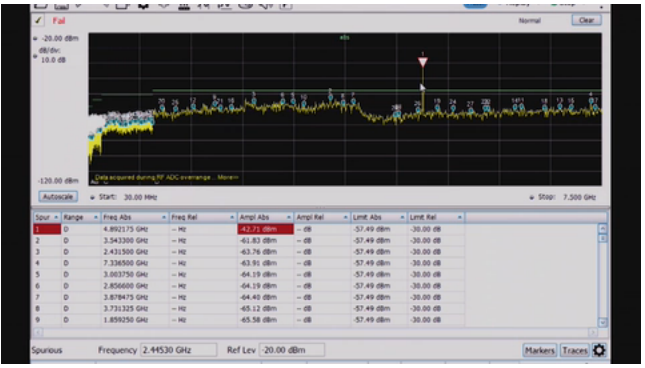

Before any new Bluetooth-enabled device, whether it’s a sophisticated communication or a simple USB dongle, can come to market it must meet stringent FCC-mandated requirement for EMI emissions.
In the past, designers typically waited to the end of the design cycle before sending their product off to a test house for official compliance testing. Unfortunately, more often than not most Bluetooth designs fail the first time around. Multiple trips to the test house can get expensive and depending on the root cause can easily lead to delays and missed deadlines.
A much better approach is to perform pre-compliance checks early on so that any EMI problems can be identified and corrected. While this makes intuitive sense, many designers feel they don’t have the equipment or the expertise to a do an adequate job of pre-compliance testing.
Now, however, with modern PC-based spectrum analysis software coupled with affordable Tektronix USB-based spectrum analyzers such as the RSA306 or RSA 500/600 Series, performing these checks can be quick and easy. The video below, “Basic EMI Pre-Compliance Test for Bluetooth Devices,” shows you how to perform in-band emissions and spurious tests in the lab using a Tektronix RSA607A real-time spectrum analyzer.

Pre-compliance testing goes a long way to ensuring that you pass EMI/EMC compliance testing at the test house. Bluetooth radio testing can also be performed just as easily with the right equipment. Watch this video to learn how to test that your Bluetooth device is turning on and transmitting correctly. And be sure to download our eGuide to RF Signals to quickly identify the signals you’re looking for.


